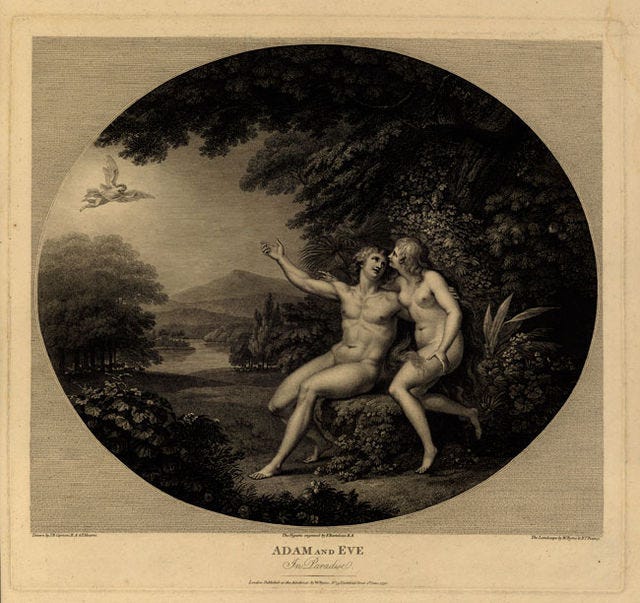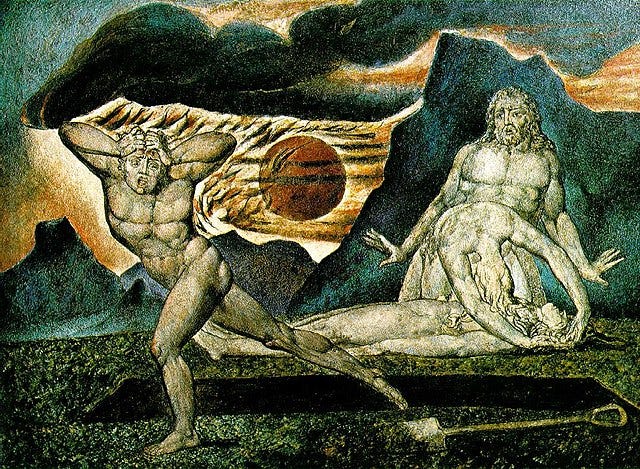Hello again friends! I wanted to let you know that in a few weeks I will be giving a Zoom talk called ‘Women and Power in the Old Testament’. If this is something you might be interested in, you can book a spot through this link! It would be great to see some of you there. See this short video for more information!

Recently, the lectionary has given us a great deal of readings from Genesis, which I’m always pleased to see!
Genesis is well known for its creation accounts which discuss the beginning of all things, but you might also have noticed that some other important customs/traditions find their beginnings in Genesis.
In this newsletter, we’re going to explore the idea of an ‘etiology’ or ‘beginning story’ and look at some of the beginnings we find in Genesis. There are many ways of looking at etiologies, and some perspectives are more theological than others.
Here, we’re going to think about them in terms of how they explain the existence of important social/religious practices - the other perspectives are important too, but including them would make this very long!
Marriage
Adam and eve by Francesco Bartolozzi, 1790 (wikimediacommons.org)
The second creation account begins in Genesis 2:4b and tells the story of a very anthropomorphic (or 'human like’) God creating the world. Whereas in Genesis 1, God speaks everything into being, here we see God taking very ‘hands-on’ approach to the creative task. God gets down in the dirt (Hebrew ‘adam’) to form the first human (‘ha-adam’ eg ‘the one made from earth’) and gives them life by blowing breath/spirit into their nostrils.
Quite remarkable, and much more tangible than the universal grandeur that we see in Genesis 1.
Having said all that, have you ever noticed the way in which the story pauses in v 24? Here the text digresses from its description of events and says ‘therefore, a man leaves his father and his mother and clings to his wife, and they become one flesh’.
In this moment, the narrator looks to camera and says ‘by the way, here’s why we do that thing!’. This functions as a sort of editorial comment, and is the first of our ‘etiologies’.
This text is an example of an origin story within an origin story, in which a social practice is referred to within the grand scheme of creation. This was a way of making sense of marriage which was one of the fundamental social building blocks of ancient society. This etiology emphasises its importance by embedding it within a creation narrative.
Circumcision
Circumcision of Abraham, from the Bible of Jean de Sy, ca. 1355-1357 (wikimediacommons.org)
Another religious/social practice that finds its origin in Genesis is circumcision. It appears in ch 17.
This is actually God’s second covenant with Abraham. The first appears in ch 15 and here God asks Abraham for various animal sacrifices. He is instructed to cut them in half and walk through the pieces - a strange action that puzzles scholars.
No one is really sure what this sign meant, but some interpreters say that the party passing between the pieces will die if they violate the covenant. Here, though, a smoking fire pot and a flaming torch, perhaps representative of God’s presence pass through the pieces. This points to the way in which God will be faithful to the covenant.
You’d think that would be enough - but there’s more!
Just two chapters later we find God making a second covenant with Abraham. This time, the covenant of the circumcision. This passage is an etiology that explains the origin of circumcision and why it was such an important sign for the ancient Israelites and remains so for many Jewish people today. Here it is deemed a sign of the promises that God made to Abraham and his descendants. But this isn’t the only etiology for circumcision! As a bonus round, take a look at Exodus 4…
Family Drama
William Blake's Cain and Abel, circa 1826 (wikimediacommons.org)
This final etiology I want us to draw your attention to is different from the first two. It’s not a social or religious practice as much as a fact of life - I’m talking about the introduction of family drama into the world in Genesis 4!
Most of us will be familiar with the initiation of sibling rivalry between Cain and Abel in Genesis 4. The text tells us that while Abel was a ‘keeper of sheep’, Cain was a ‘tiller of the land’. Both brought offerings to the Lord, who is reported as preferring the firstlings from Abels flock.
Cain was not pleased by this outcome.
We hear in v5 that ‘his countence fell’ and in what could be described as a divine pep talk the Lord reassured him that if he does well he will be accepted. God goes on to warn that 'sin’ is laying at Cain’s door, and this is the first appearance of the language of sin in the bible.
Although Christian theology understands sin to enter the world when the humans turn away from God for the first time by disobediently eating from the tree of life in Genesis 3 (cf Augustine!), the language of sin does not appear until chapter 4.
Further to this, the passage acts to explain that enmity between family members has so since the beginning. It is an etiology for family drama and the crime of murder.
That’s all for today! But, as you read through the rest of Genesis, see what other etiologies you spot. There are origin stories for all sorts of things, from pain in childbirth to animal sacrifice.






